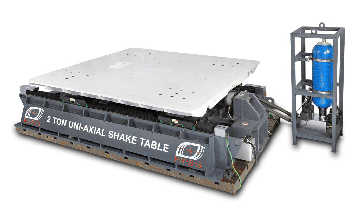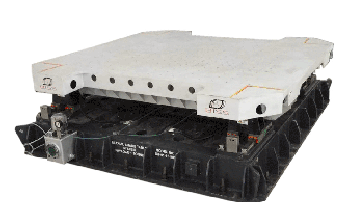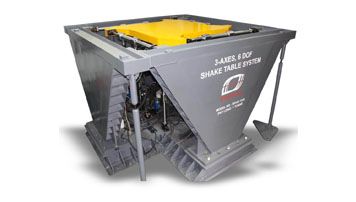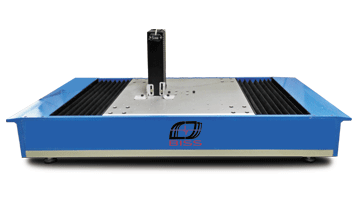
- Home
- Products
Systems
Accessories
- Grips And Fixtures
- Actuators
- Applications
BY Material
By Test Methods
- Our Company
- News
- Blog
- Support
- Media Centre |||
Shake Tables
The shake table systems produced by BISS are being widely used in testing structures or components of civil or automotive or aerospace or nuclear power engineering. These systems are typically used in testing structures subjected to random or periodic support excitations for understanding their dynamic behavior or for their performance evaluation. The payload rating of BISS shake tables vary from 50 kg to 5000kg.
The configuration of shake tables can be classified based on:
- axis - uniaxial, biaxial or multi-axial
- drive – hydraulic, pneumatic, servo-electric or electro-magnetic driven
- configuration - Hexapod like Stewart Table or Orthogonal Shake Table
- points of excitation - single point single component, single point multiple components, single component multiple points
IModular support structure: functionality verification at BISS premise and quick installation at site.
Effective machine foundation to limit vibration transmission.
Backlash-free universal joints to connect actuators to table and support structure.
Multi-channel multi-station control system to simultaneously control: 1. actuators in MAST 2. tables for multi-point excitation.
Auto-calibration: linear encoders with 10-micron resolution or better used with actuators for displacement measurement and control. This arrangement is insensitive to adverse environmental changes.
Real-time computation of velocity and acceleration from the linear encoder requires no additional requirement for sensors on actuator or reference table for velocity and acceleration measurements.
Real-time application software for generation of various test waveforms: (a) harmonic waveforms (sine, triangular, square); (b) recorded time history; (c) sine-on-sine; (d) sine-sweep; (e) random signal (stationary, non-stationary).
Delta-P and acceleration control stabilization respectively to overcome issues with oil-column resonance and test structural resonance.
The test system can be used with remote test status and health monitoring packages.




